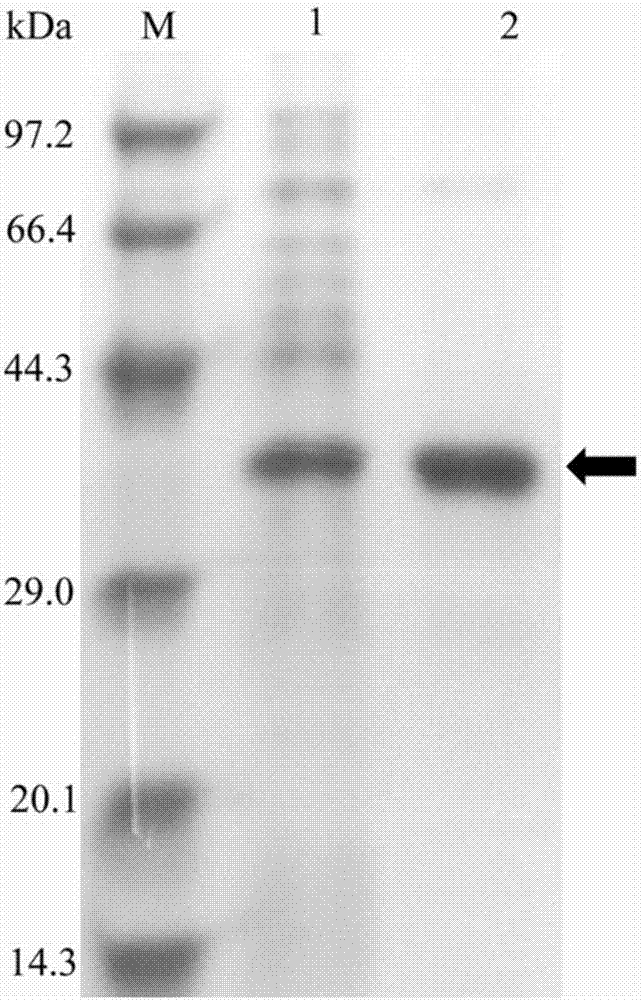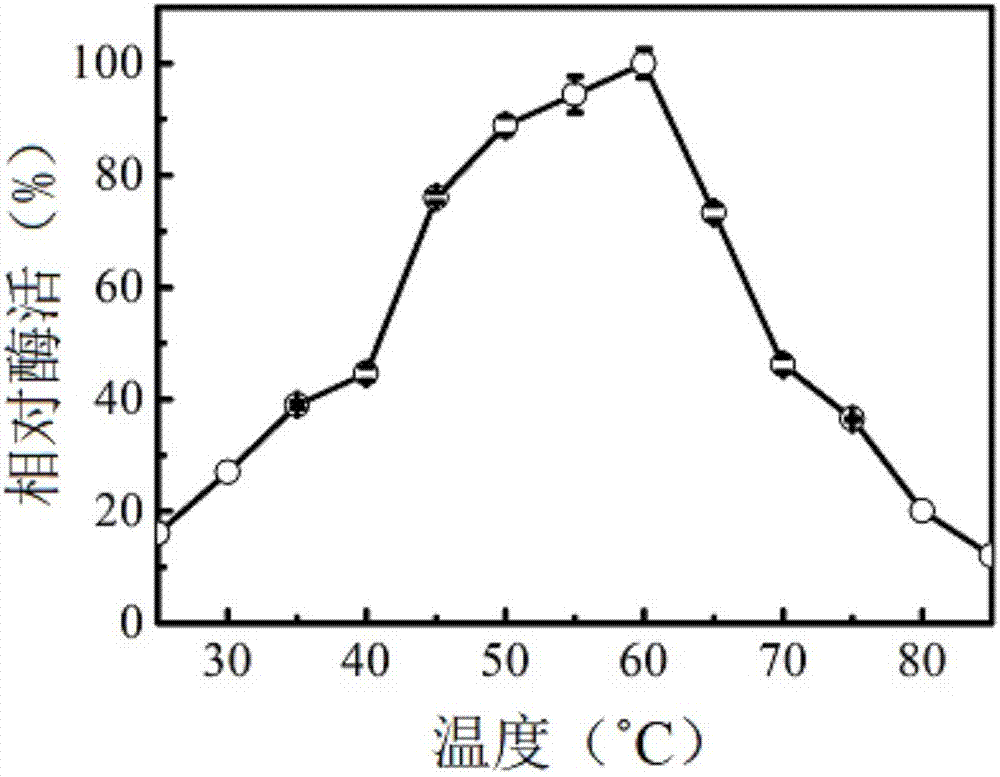Application of esterase gene est816 and recombinant esterase thereof in degrading pyrethroid pesticides
A technology of pyrethroids and est816, applied in the field of genetic engineering, achieves the effect of good stability and broad application prospects
- Summary
- Abstract
- Description
- Claims
- Application Information
AI Technical Summary
Problems solved by technology
Method used
Image
Examples
Embodiment 1
[0061] Cloning and Escherichia coli expression of embodiment 1 esterase gene est816
[0062] 1. Cloning of gene fragments
[0063] (1) according to the gene sequence design primer of esterase gene est816 as follows:
[0064] est816-fw: 5'-CGC ATGCCGCATGTAGAGAACGA-3' (the bold and underlined part is the BamHI restriction site);
[0065] est816-rv: 5'-CCG TCAGGACACCAATGAAGCTTCTCGA-3' (the part in bold and underlined is the EcoRI restriction site).
[0066] (2) PCR amplification
[0067] Using the plasmid pUC118-A (the plasmid obtained by cloning the est816 gene sequence based on the plasmid pUC118) as a template, and est816-fw and est816-rv as primers, the est816 gene was amplified by PCR. The system is as follows:
[0068]
[0069] The PCR reaction conditions are as follows:
[0070] The first stage: pre-denaturation at 98°C for 3 minutes;
[0071] The second stage: denaturation at 98°C for 10 sec, annealing at 64°C for 15 sec, extension at 72°C for 1 min, a total o...
Embodiment 2
[0080] Cloning and Pichia pastoris expression of embodiment 2 esterase gene est816
[0081] 1. Cloning of gene fragments
[0082] (1) according to the gene sequence design primer of esterase gene est816 as follows:
[0083] EcoRIfw: 5'-CCG ATGCCGCATGTAGAGAACGA-3' (the bold and underlined part is the EcoRI restriction site);
[0084] KpnIrv: 5'-CGG GGACACCAATGAAGCTTCTCGA-3' (the bold and underlined part is the KpnI restriction site).
[0085] (2) PCR amplification
[0086] The plasmid pET-28a(+)-est816 was used as a template, and EcoRIfw and KpnIrv were used as primers to perform PCR amplification of the est816 fragment. The system is as follows:
[0087]
[0088] The PCR reaction conditions are as follows:
[0089] The first stage: pre-denaturation at 98°C for 3 minutes;
[0090] The second stage: denaturation at 98°C for 10 sec, annealing at 64°C for 15 sec, extension at 72°C for 1 min, a total of 30 cycles;
[0091] The third stage: extension at 72°C for 10 minu...
Embodiment 3
[0105] The enzymatic property research of embodiment 3 recombinant esterase Est816
[0106] 1. Optimum reaction temperature and thermal stability of recombinant esterase
[0107] The enzyme solution of the recombinant esterase is subjected to an enzymatic reaction at 20-80°C, the reaction system is 405 μl, and its composition is 400 μl of potassium phosphate solution (pH6.8) containing 40 μM p-nitrophenyl acetate and 5 μl of enzyme solution . The reaction system was reacted at different temperatures for 5 minutes, and then the absorbance of p-nitrophenol released during the process was measured at a wavelength of 405 nm, and a blank control without enzyme solution was made at the same time. The enzyme activity was measured to obtain the optimum reaction temperature (the highest enzyme activity was recorded as 100%).
[0108] The test results are attached image 3 shown. In 50mM potassium phosphate buffer (pH 6.8), the recombinant AHLs-lactonase enzyme solution was placed a...
PUM
| Property | Measurement | Unit |
|---|---|---|
| molecular weight | aaaaa | aaaaa |
| molecular weight | aaaaa | aaaaa |
Abstract
Description
Claims
Application Information
 Login to View More
Login to View More - R&D
- Intellectual Property
- Life Sciences
- Materials
- Tech Scout
- Unparalleled Data Quality
- Higher Quality Content
- 60% Fewer Hallucinations
Browse by: Latest US Patents, China's latest patents, Technical Efficacy Thesaurus, Application Domain, Technology Topic, Popular Technical Reports.
© 2025 PatSnap. All rights reserved.Legal|Privacy policy|Modern Slavery Act Transparency Statement|Sitemap|About US| Contact US: help@patsnap.com



